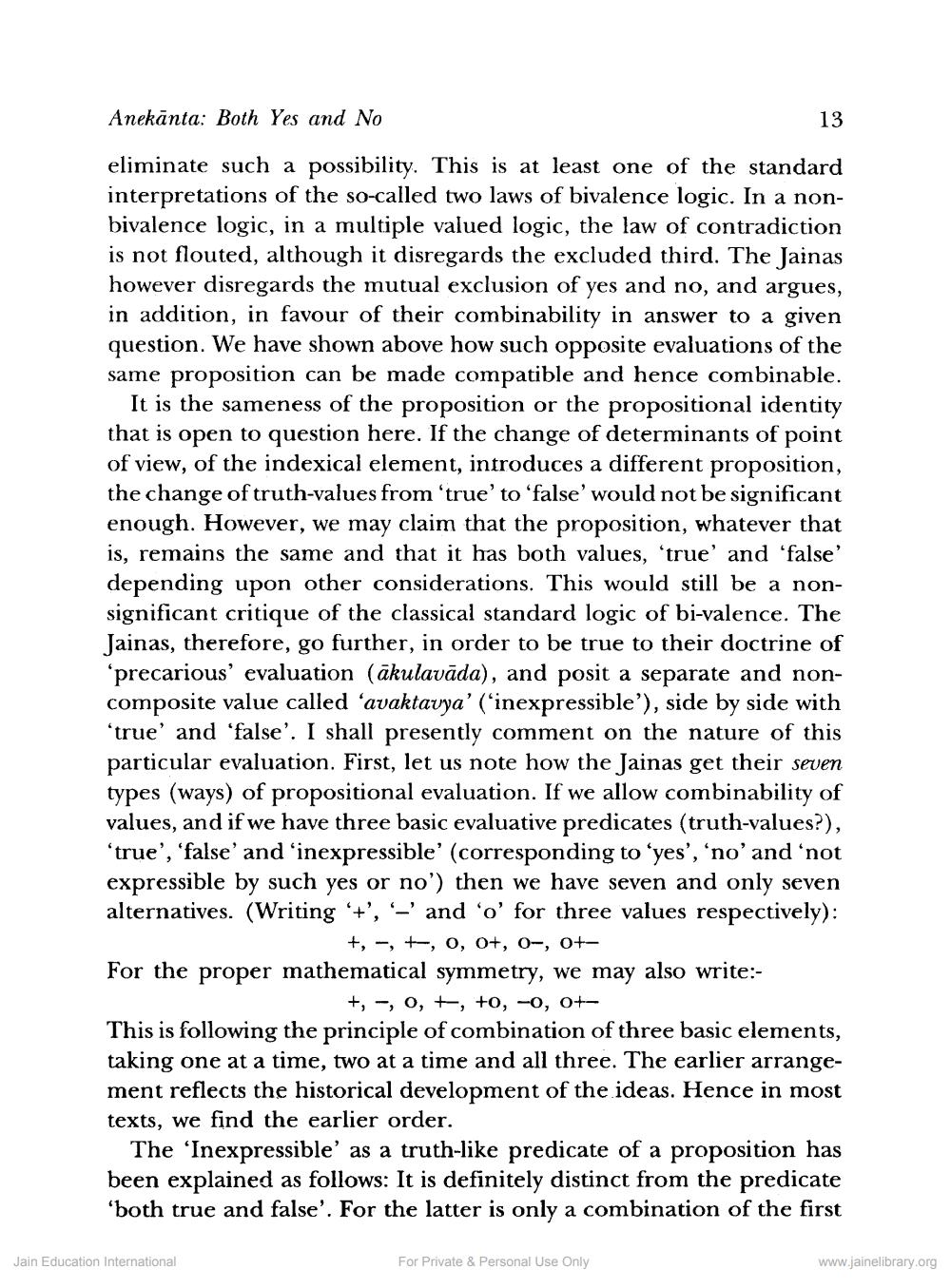________________
Anekānta: Both Yes and No
13
eliminate such a possibility. This is at least one of the standard interpretations of the so-called two laws of bivalence logic. In a nonbivalence logic, in a multiple valued logic, the law of contradiction is not flouted, although it disregards the excluded third. The Jainas however disregards the mutual exclusion of yes and no, and argues, in addition, in favour of their combinability in answer to a given question. We have shown above how such opposite evaluations of the same proposition can be made compatible and hence combinable.
It is the sameness of the proposition or the propositional identity that is open to question here. If the change of determinants of point of view, of the indexical element, introduces a different proposition, the change of truth-values from 'true' to 'false' would not be significant enough. However, we may claim that the proposition, whatever that is, remains the same and that it has both values, 'true' and 'false' depending upon other considerations. This would still be a nonsignificant critique of the classical standard logic of bi-valence. The Jainas, therefore, go further, in order to be true to their doctrine of precarious' evaluation (akulavāda), and posit a separate and noncomposite value called 'avaktavya' ('inexpressible'), side by side with 'true' and 'false'. I shall presently comment on the nature of this particular evaluation. First, let us note how the Jainas get their seven types (ways) of propositional evaluation. If we allow combinability of values, and if we have three basic evaluative predicates (truth-values?), 'true', 'false' and 'inexpressible' (corresponding to 'yes', 'no'and not expressible by such yes or no') then we have seven and only seven alternatives. (Writing '+', '-' and 'o' for three values respectively):
+,-, t-, 0, 0+, 0-, 0+For the proper mathematical symmetry, we may also write:
+, -, O, +, +o, -0, 0+This is following the principle of combination of three basic elements, taking one at a time, two at a time and all three. The earlier arrangement reflects the historical development of the ideas. Hence in most texts, we find the earlier order.
The 'Inexpressible' as a truth-like predicate of a proposition has been explained as follows: It is definitely distinct from the predicate 'both true and false'. For the latter is only a combination of the first
Jain Education International
For Private & Personal Use Only
www.jainelibrary.org




